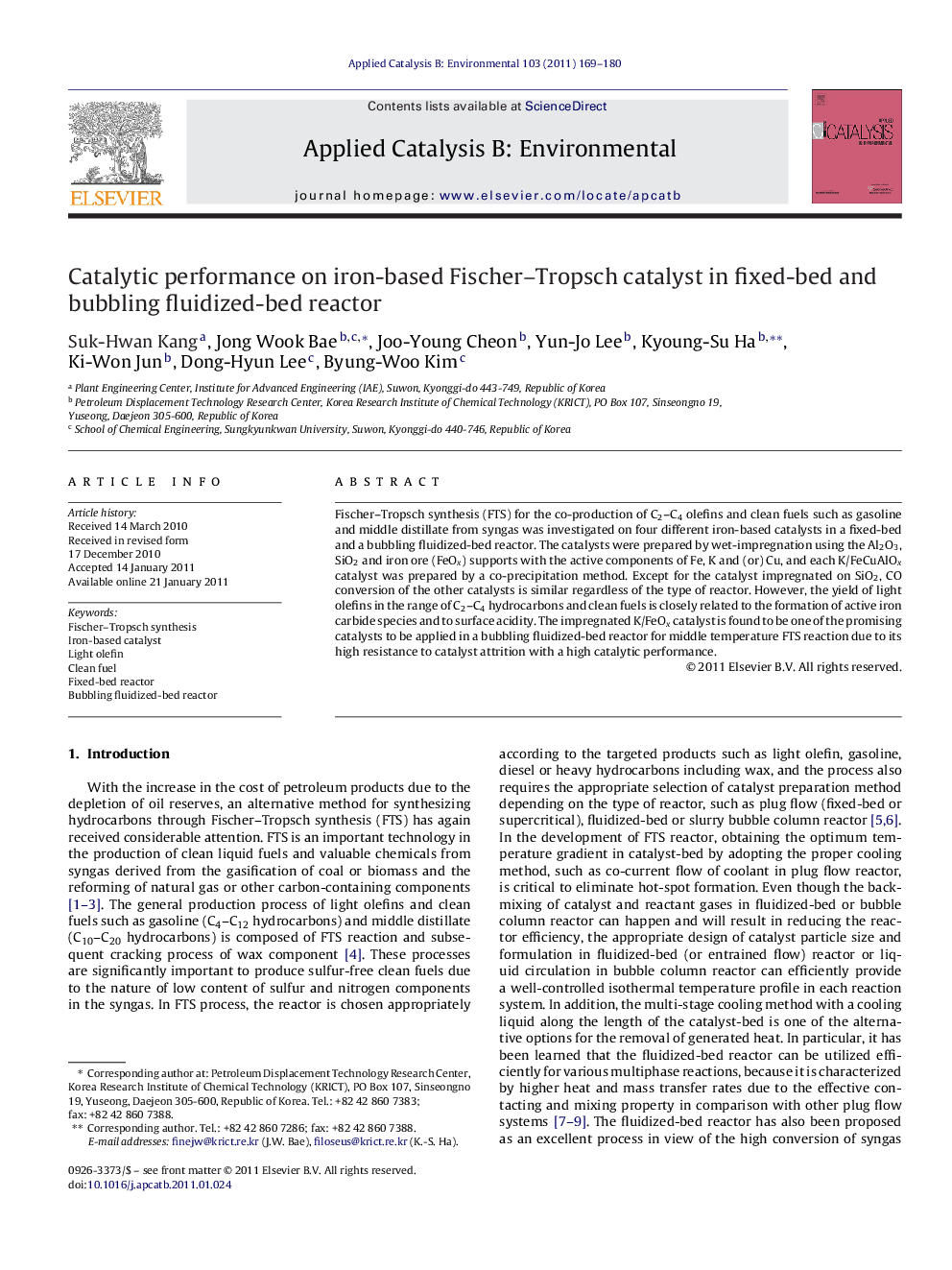| Article ID | Journal | Published Year | Pages | File Type |
|---|---|---|---|---|
| 47007 | Applied Catalysis B: Environmental | 2011 | 12 Pages |
Fischer–Tropsch synthesis (FTS) for the co-production of C2–C4 olefins and clean fuels such as gasoline and middle distillate from syngas was investigated on four different iron-based catalysts in a fixed-bed and a bubbling fluidized-bed reactor. The catalysts were prepared by wet-impregnation using the Al2O3, SiO2 and iron ore (FeOx) supports with the active components of Fe, K and (or) Cu, and each K/FeCuAlOx catalyst was prepared by a co-precipitation method. Except for the catalyst impregnated on SiO2, CO conversion of the other catalysts is similar regardless of the type of reactor. However, the yield of light olefins in the range of C2–C4 hydrocarbons and clean fuels is closely related to the formation of active iron carbide species and to surface acidity. The impregnated K/FeOx catalyst is found to be one of the promising catalysts to be applied in a bubbling fluidized-bed reactor for middle temperature FTS reaction due to its high resistance to catalyst attrition with a high catalytic performance.
Graphical abstractFigure optionsDownload full-size imageDownload as PowerPoint slideResearch highlights► Fischer–Tropsch synthesis (FTS) was investigated in fixed-bed reactor (FBR) and bubbling fluidized-bed reactor (BFBR). ► Co-production of C2–C4 olefins and clean fuels is maximized in BFBR. ► High CH4 and CO2 selectivities were induced from the inhibition of iron carbide formation. ► K/FeOx catalysts can be a good candidate for applying in BFBR.
